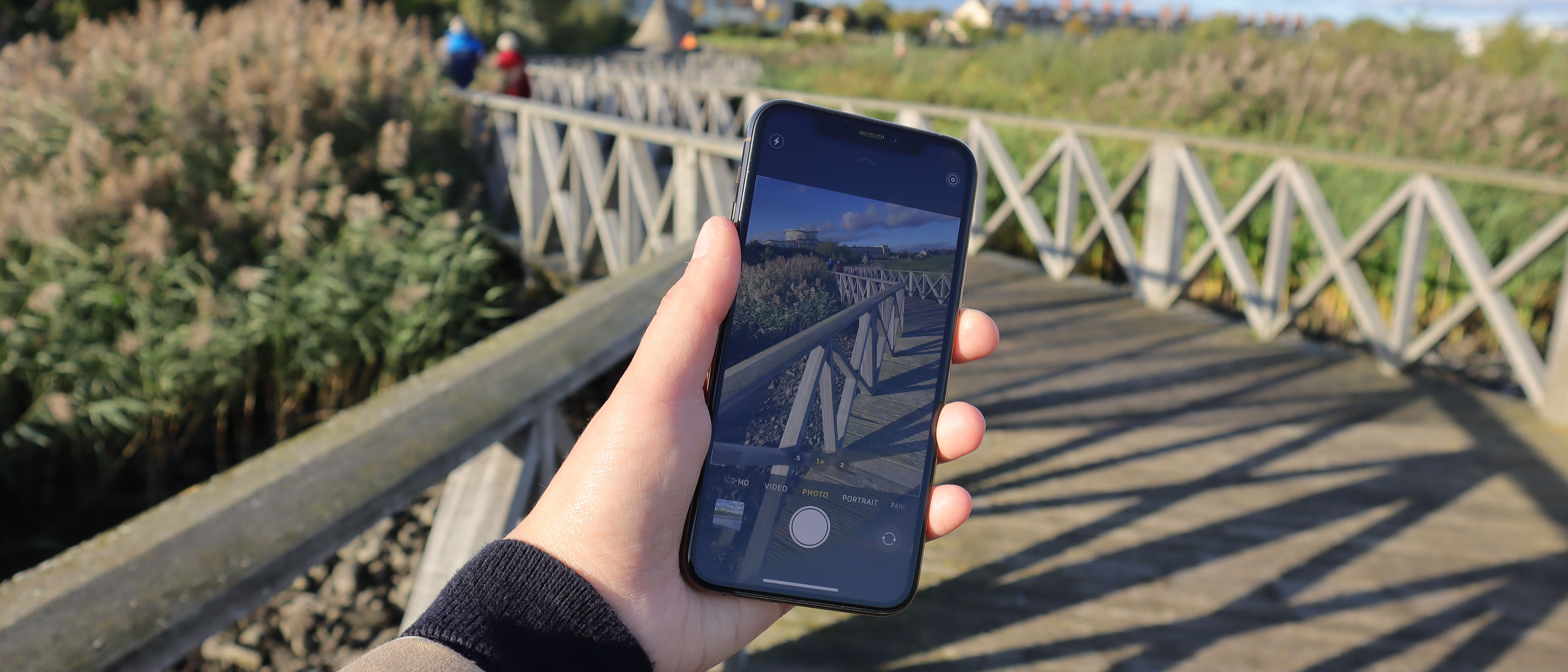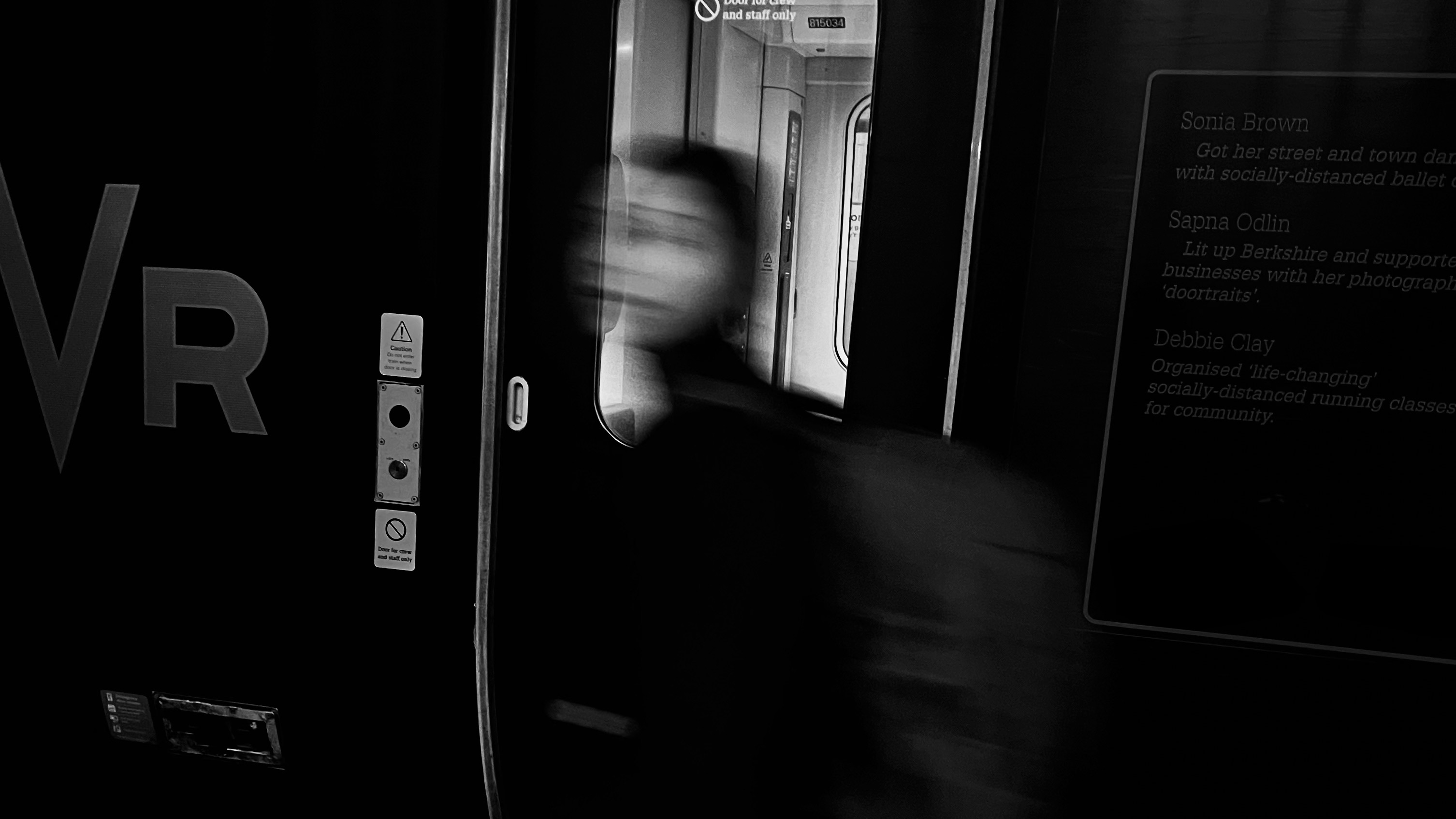Digital Camera World Verdict
There’s a lot to like about the iPhone 11 Pro camera, which does a fantastic job of producing excellent images across all of its lenses. You won’t be treated to a vast array of shooting modes, but for just getting the shot in a variety of conditions it’s very, very good. The best iPhone ever for image quality, the iPhone 11 Pro, is certainly worth considering if you’re due an upgrade but, if you’re happy to use Android instead and the Huawei P30 Pro is available in your territory, it offers similar image quality with much greater flexibility at a better price.
Pros
- +
Triple-lens camera flexibility
- +
Automatic Night mode for low light
- +
Quite convincing portrait mode
- +
Excellent screen displays images brilliantly
Cons
- -
Very high asking price
- -
You can’t expand the inbuilt memory
- -
No pro/advanced modes in the camera app
- -
Telephoto lens is relatively limited at 2x
Why you can trust Digital Camera World
The iPhone 11 Pro was always going to make headlines. There will be vast swathes of people that will buy an iPhone regardless of what any reviewer says, but with this piece we’re aiming to discover whether Apple can reclaim its crown of best camera phone on the market.
You may have realised the answer already, as the iPhone 11 Pro has just jumped to the top of our list of the best camera phones you can buy right now. This also makes it the best iPhone for photography... though there are older, cheaper iPhones that make good candidates too. There's also the iPhone 11 Pro Max to consider, too...
For the first time ever we’ve got a super-wide-angle lens on an iPhone – nothing new for anybody who’s been using Android – but it is a tempting extra for those who are thinking of upgrading from an older iPhone model.
Read more: Find out what we think of the new iPhone 11 ultra-wide camera
As always, an iPhone is not for those on a budget. With a starting price of £1,049 for the iPhone 11 Pro, you have to really want it. Considering that’s just for the 64GB model, for photographers likely to be taking lots of shots (and video), it’s probably a sensible idea to splash out for the larger capacity options (128GB and 256GB are available) if you can. (If you're on a tight budget, you should check out our guide to the best budget camera phones).
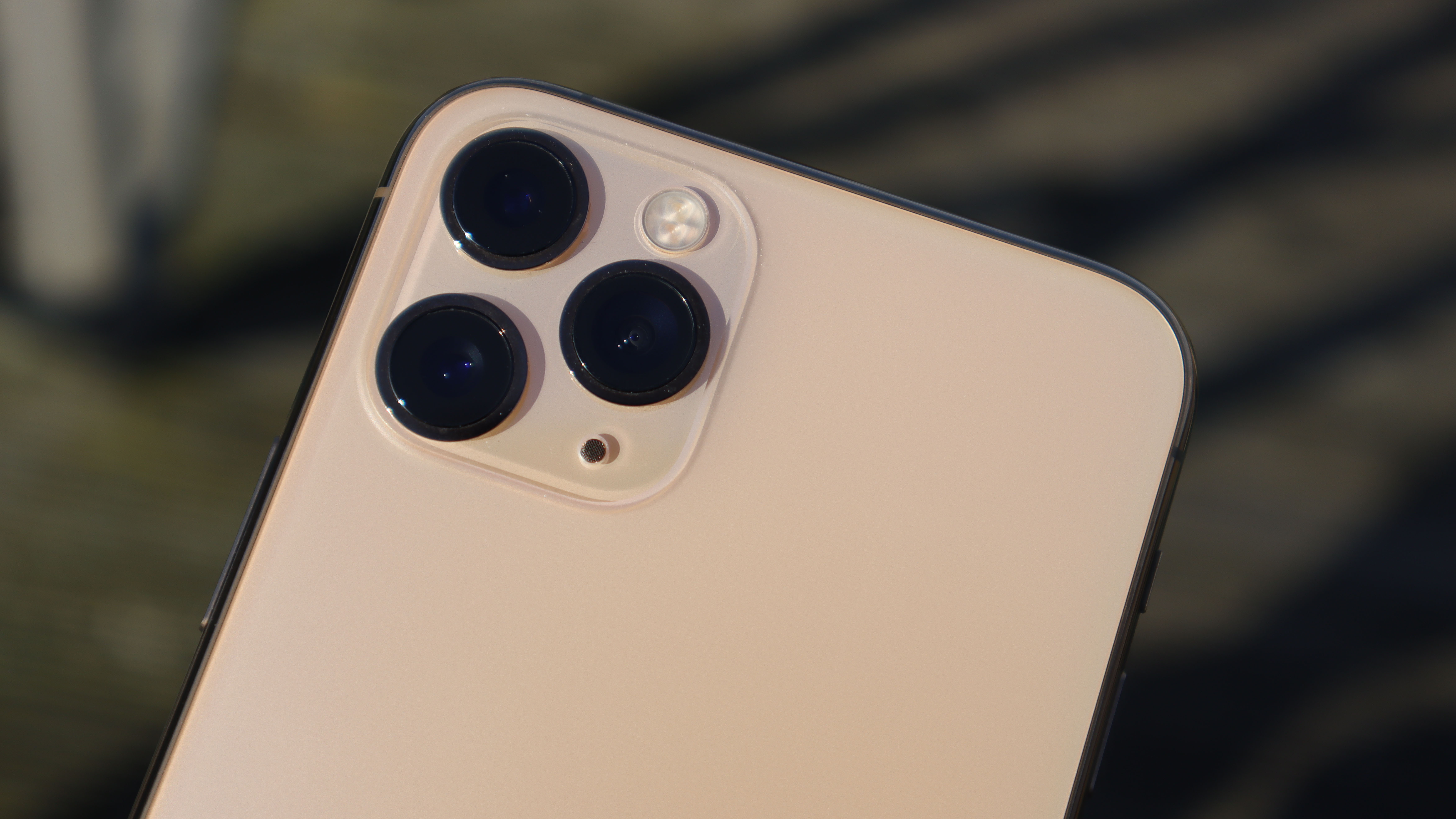
Key features
The iPhone 11 Pro doesn’t represent a huge overhaul for the camera, but it does introduce some new interesting features, as well as refining what we’ve already seen from previous models.
In case you missed the news, there’s two sizes available for the iPhone 11 Pro – this review concentrates on the standard option, but you can also purchase a larger iPhone 11 Pro Max (but both feature the same camera setup).
That camera is a triple lens/sensor array, each boasting 12 megapixels. You get a standard lens, offering 26mm equivalent at f/1.8, plus a “telephoto” lens which gives you 52mm and a new wider f/2.0 aperture. A third lens completes the set, and gives you a 13mm f/2.4 equivalent option.
Apple has finally introduced a Night mode for low-light shooting, while we’ve also got the latest version of “Smart HDR”. Announced at the keynote launch of the iPhone 11 series was “Deep Fusion”, which promises to use computational photography to produce what are promised to be fantastic results – but it’s not available just yet and will arrive with an update later in the year.
Other key features which are likely to be pertinent to photographers/videographers include 4K video recording at up to 60fps, improvements to Portrait Mode and a battery life which promises to deliver four more hours of life when compared with the iPhone XS.
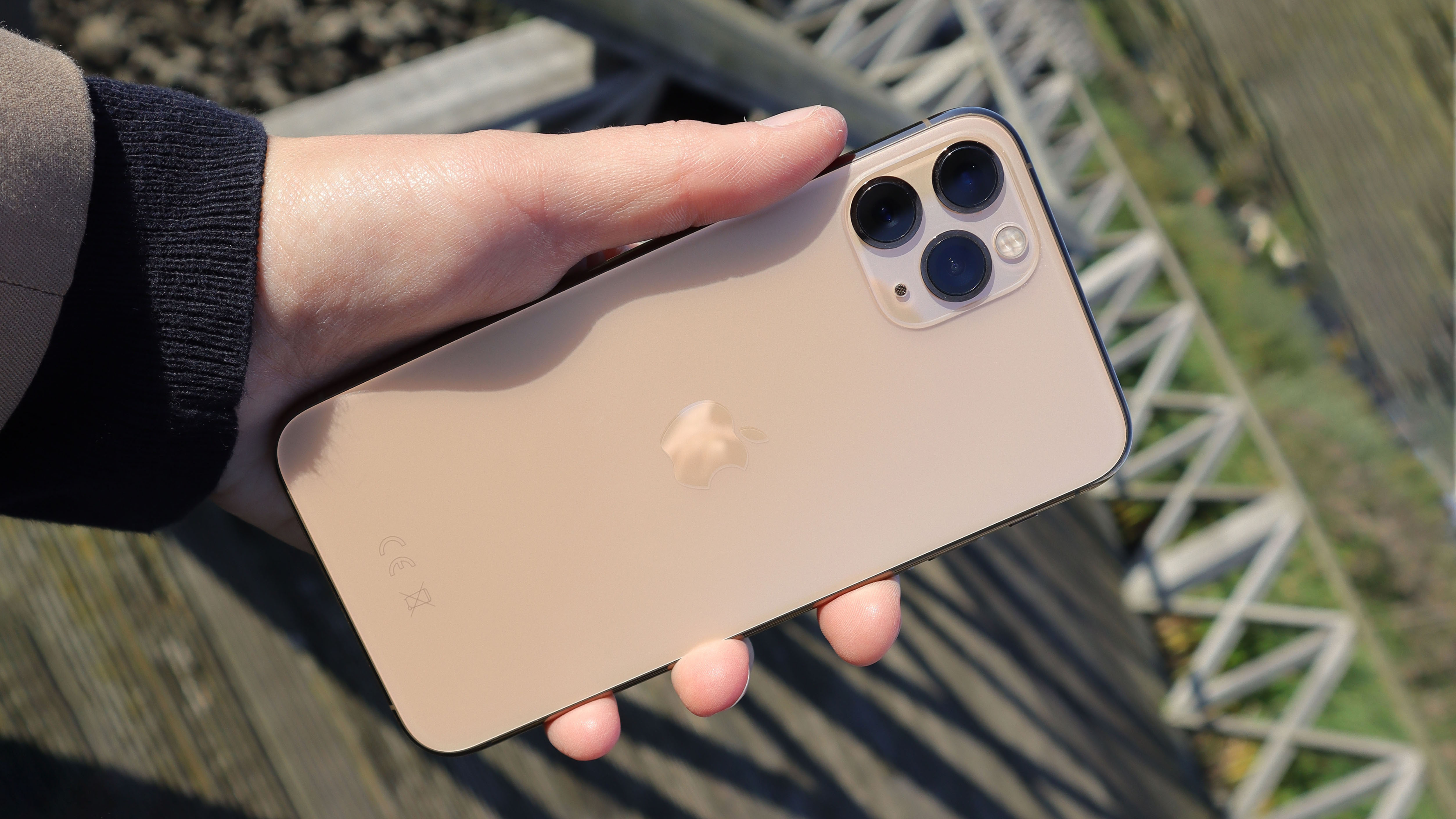
Build and handling
Apple hasn’t transformed the outward appearance of the iPhone 11 Pro when compared to its predecessor, the iPhone XS. With a screen size of 5.8 inches, it’s actually relatively small by modern smartphone standards, but if you crave a larger size, there’s always the iPhone 11 Pro Max.
The biggest external difference is the triple-lens setup which is gathered together in a triangle formation on the rear of the iPhone 11 Pro. Each of the lens housings is also quite a bit bigger than those found on the iPhone XS, too.
If you’ve ever used an iPhone before, you’ll know that the native camera app is relatively straightforward. While that’s great for beginners or those who just want to point-and-shoot, we remain disappointed that Apple resolutely refuses to introduce any kind of advanced mode offering greater control over settings. Still, you can download such apps from the App Store if that’s something you’d like.
Apple has in fact simplified the native app for the iPhone 11 Pro, hiding some of settings from view to give a cleaner overall look. If you need to get hold of these again, tap the arrow at the top of the screen and you’ll see an array of settings, including flash, digital filter and aspect ratio options. A new 16:9 aspect ratio has been introduced for the iPhone 11 series, which is handy for creating panoramic type images, especially if you combine it with the super-wide-angle lens.
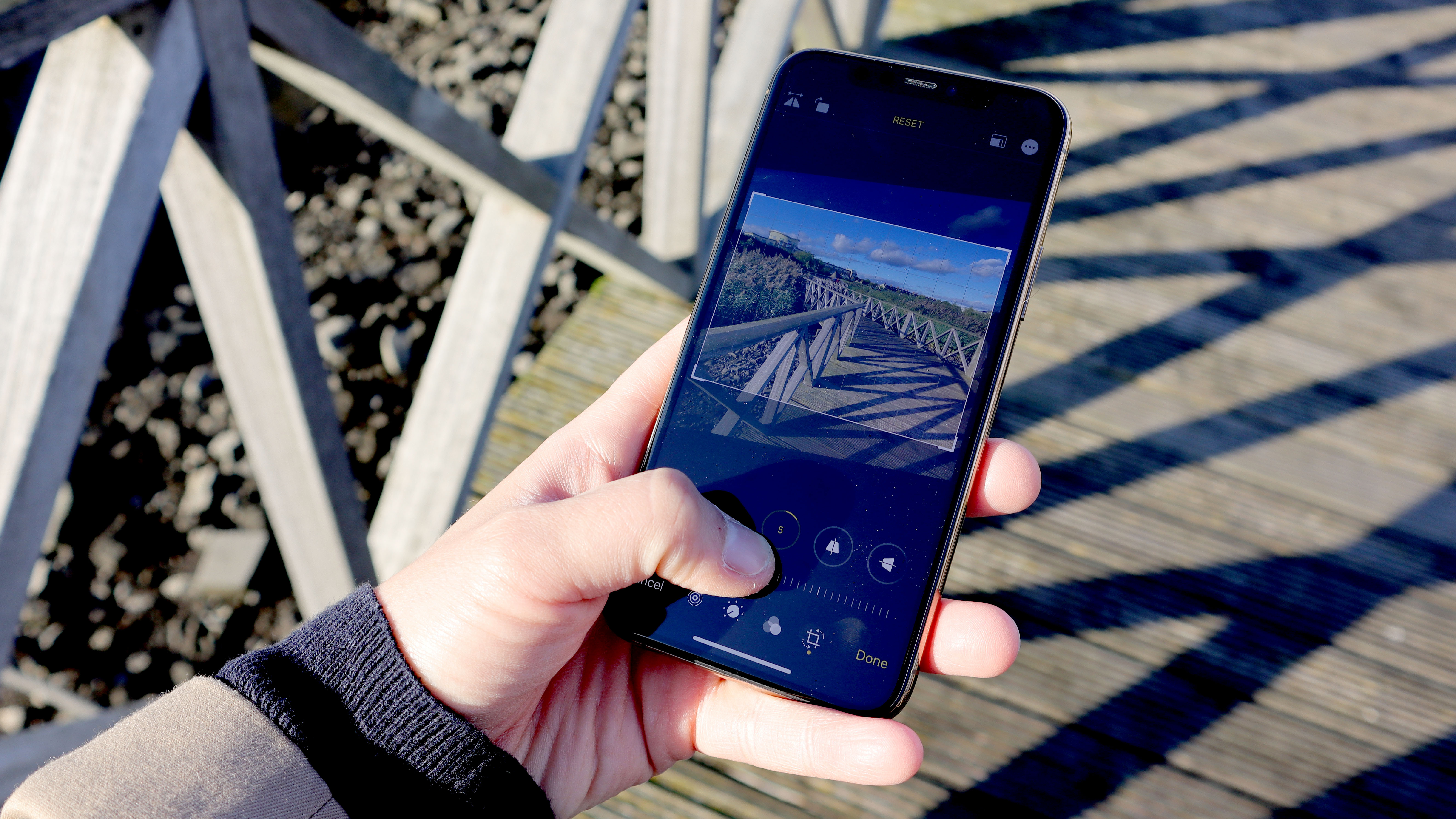
When shooting in either the standard (26mm) or telephoto (52mm) lens, a new extremely useful feature is the ability to see what lies on the outer edges of your composition. You can use this to determine whether or not you want to use a wider camera, or to see whether an interesting subject might wander into frame.
Another interesting feature which makes use of the three lenses is the ability to capture a super-wide angle image simultaneously while shooting with the standard or telephoto lens. If you enable this, you’ll be able to use the extra data captured to make edits (such as adjusting your composition or correcting wonky horizons) after-the-fact without losing resolution. It’s worth noting that in order to take advantage of this feature you need to shoot in the HEIF format, rather than JPEG, and the additional data will be deleted if it’s not used within 30 days.
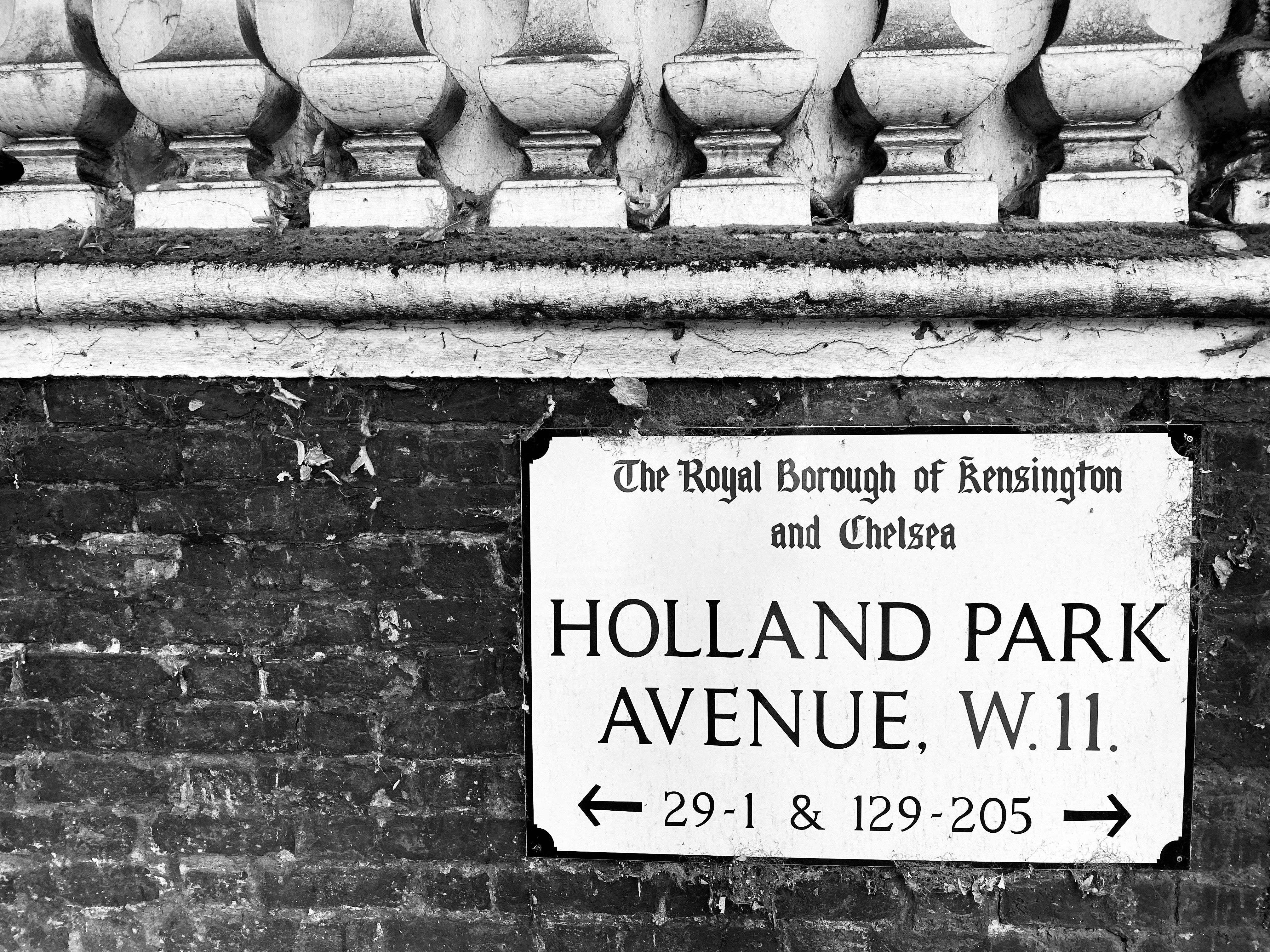
Apple doesn’t furnish its users with a vast array of unusual or complicated shooting modes, but as well as the standard shooting mode you get Portrait, which has seen some improvements in the form of being better equipped to shoot non-human subjects such as pets.
Much has been made of the introduction of the new Night mode, but it’s not actually a Mode you can select. Instead, it will activate automatically should the phone detect that there’s not a lot of light in the scene. It works in essence by shooting a set of short exposures and then blending them together. You’ll know if Night mode is in action by an icon at the top of the screen – if you tap this, you’ll be able to take a little bit of control by shortening the shutter speed, or turning it off altogether if you like.

Performance
While the iPhone 11 Pro might not have a huge array of shooting modes to get to grips with, nor any kind of advanced controls, one thing that is hard to fault is the quality of the imagery it produces.
We are already impressed with the quality iPhone XS, and the iPhone 11 Pro builds on that further. A lot was made of the consistency of image quality between the three lenses, particularly in terms of color. While having three lenses, including a super-wide-angle optic is nothing new for the smartphone market, this is without a doubt the best performer I’ve used in terms of uniformity of output.
The super wide-angle lens, despite being almost in fisheye territory at 13mm, does a good job of keeping things relatively distortion free and comes in extremely handy for landscape and interior shots where you want to capture a much of the scene as possible.



For low light shooting we have the new Night mode. It does a very good job, but there is some loss of detail evident if you look closely (how often you’re likely to do that is questionable, and the results look great on the iPhone 11 Pro’s screen). That said, we’ve been similarly impressed by other low-light modes from other models, particularly the Huawei P30 Pro’s Night mode, and the Google Pixel 3’s Night Sight mode.
Portrait Mode creates fairly convincing shallow depth-of-field effects, and does that particularly well with certain subjects. Humans are the obvious main contender, but thanks to improvements to artificial intelligence, it also copes well with other subjects such as pets. If you zoom in and examine very closely you might notice some feathering around the subject, but for Instagram sharing and printing at small sizes, it’s not a million miles away from using a “proper” camera.
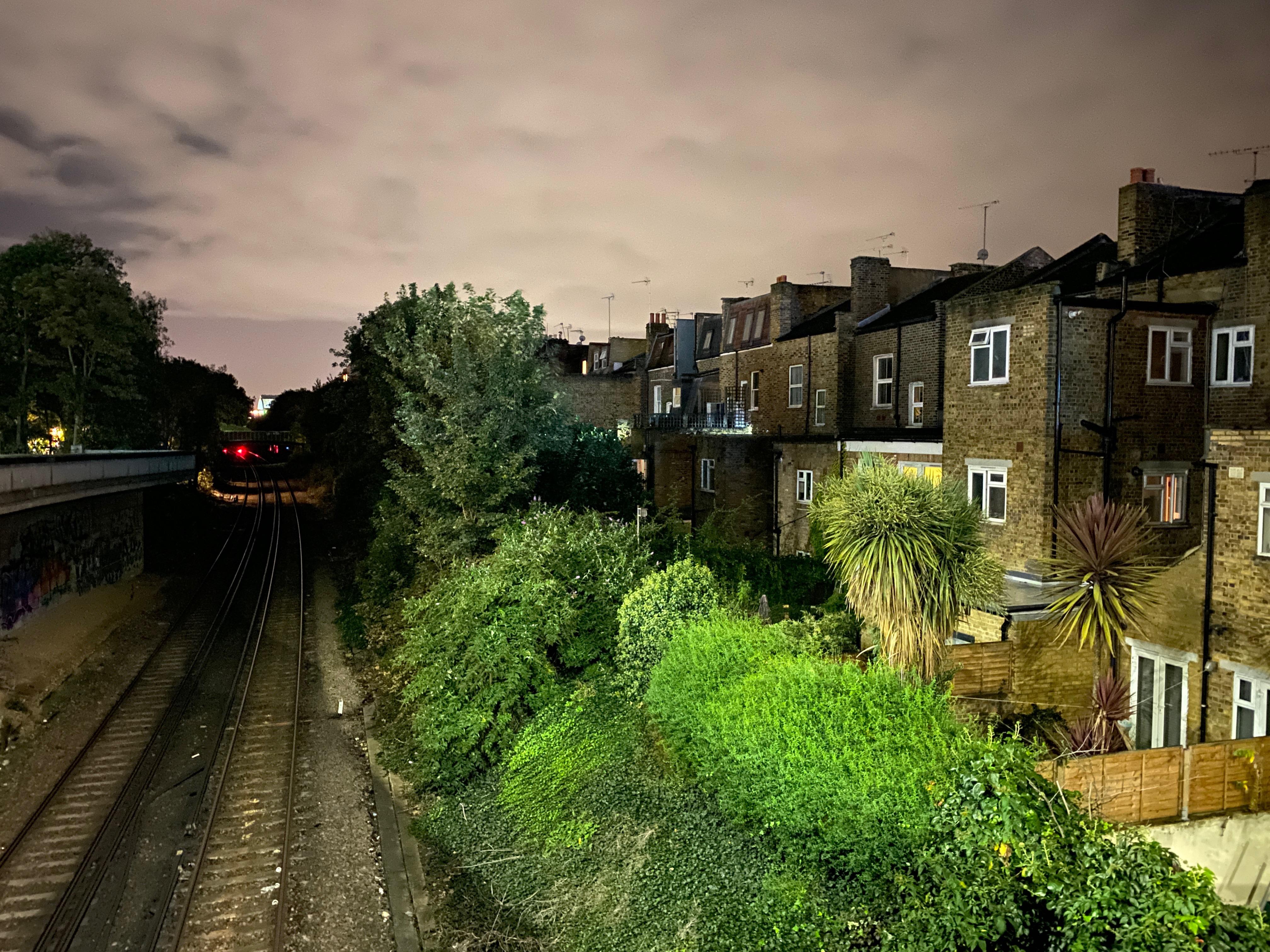
On the whole, Smart HDR works very well to produce balanced images with well-preserved highlights and shadows – you can elect to switch it off if you like, but I find that it’s not particularly necessary to do that.
Battery life is worthy of a mention here. It has been improved when compared to the iPhone XS, and depending on how you use it you should almost certainly be able to eke out a whole day’s worth of power. If you’re somebody who likes to take hundreds of photos, videos, has location data running all day and can’t stay off Facebook, investing in a battery pack (or perhaps considering the larger iPhone 11 Pro Max with its bigger battery) is a sensible idea.

Verdict
Apple – as it usually does – gets a hell of a lot of things right with the iPhone 11 Pro. It’s capable of producing fantastic images, which is, above all the most important thing.
Without a doubt it’s the best-ever image quality from an iPhone, so if you’re somebody who remains fiercely loyal to the Californian brand, you won’t have anything to complain about.
While image quality is excellent, other models, particularly the Huawei P30 Pro are more than a match for it in many, if not most, situations. There are also other disappointments to think about. There’s no ‘pro’, ‘advanced’ or ‘manual’ mode here in the native camera app, so it’s essentially a very good point-and-shoot. While that’s great for simplicity, for enthusiast and advanced photographers it’s a little frustrating.
There are plenty of alternatives on the App Store, including Lightroom Mobile, which has its own very powerful in-built camera.
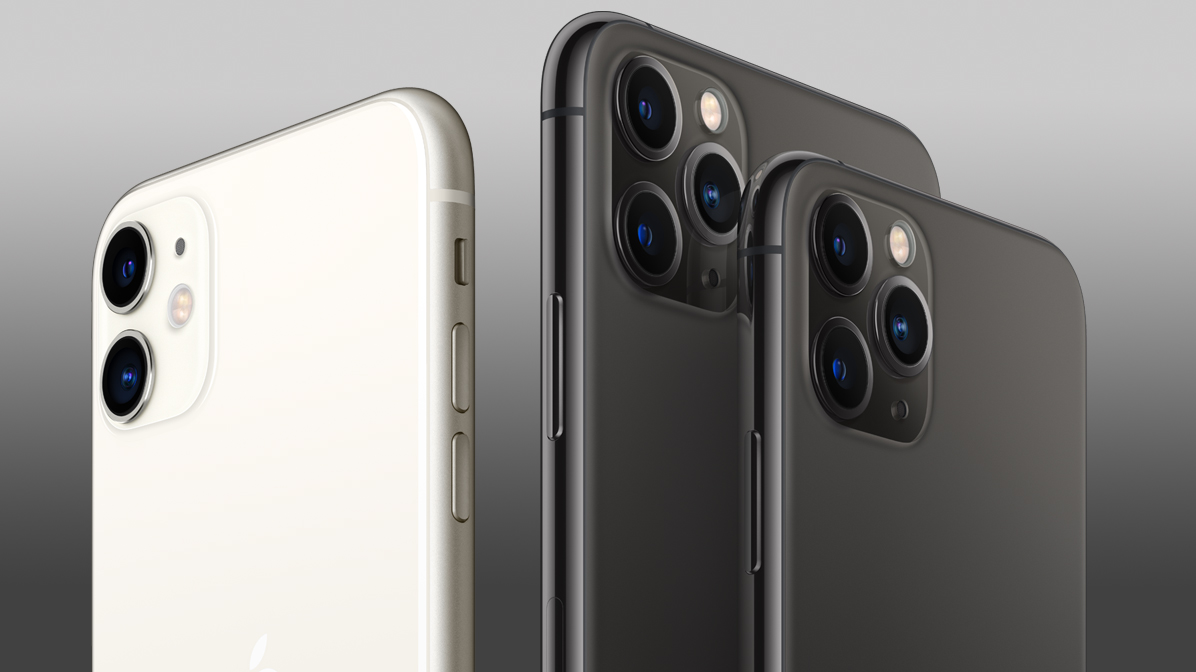
Other negative points include the inability to expand the inbuilt memory, the telephoto lens being relatively short and – of course – the very high asking price. This doesn't help the regular iPhone 11 Pro's value proposition because it doesn't even have the biggest screen. This is why we rate the iPhone 11 Pro Max just that little bit higher. Yes, it is more expensive, but if you can face the cost of an iPhone 11 Pro, you can probably stretch just that little big further to get that bigger 6.5-inch screen, which will really do justice to the iPhone 11's Pro's excellent still image and video quality.
The fact that the iPhone 11 Pro is capable of producing consistently good images, with quality matched across the three lenses, and with little or no effort for the user makes it something special. If you’re looking for a super-flexible camera at a reasonable price, then this isn’t the one for you, but if you’re looking for something which just does the job of capturing great shots in a variety of situations, then like us, you’re sure to be mightily impressed.
We’ll be keen to see how Google responds to the iPhone with its impending Pixel 4 – watch this space.
Read more:
• These are the best camera phones you can buy right now
• Which is the best iPhone for photography? Find out here
• Flagship phones are expensive – here are the best budget camera phones
• Want a future-proof phone? These are the best 5G camera phones right now
Amy Davies has been writing about photography since 2009, and used to be a colleague on Digital Camera magazine and Techradar.com. She now works as a freelance journalist writing for nclude Amateur Photographer, Stuff, Wired, T3, Digital Photographer, Digital Camera World, TechRadar, Trusted Reviews, ePhotozine and Photography Blog. She has an undergraduate degree in journalism and a postgraduate diploma in magazine journalism, both from Cardiff Journalism School.
